The No-Fear Guide to Pruning Peppers (for a Seriously Huge Harvest)
I get it. You’ve got this beautiful, green pepper plant in front of you, and the last thing you want to do is start cutting pieces off. It just feels… wrong. For years, I’ve seen new gardeners make the same mistake, and it’s not about water or fertilizer—it’s the fear of pruning. They’re afraid they’ll hurt the plant.
In this article
But here’s the secret: a few smart cuts at the right time are the difference between a handful of peppers and a truly impressive, season-long harvest. Think of it less as surgery and more as coaching. You’re just telling the plant where to put its energy to build a strong frame that can support a ton of fruit.
So let’s walk through it. This isn’t about rigid rules; it’s about understanding your plant and guiding it to be its best self.
Why a Few Snips Make a World of Difference
To be honest, understanding a little bit of the “why” makes you a much better gardener. It’s all about how a plant manages its energy.
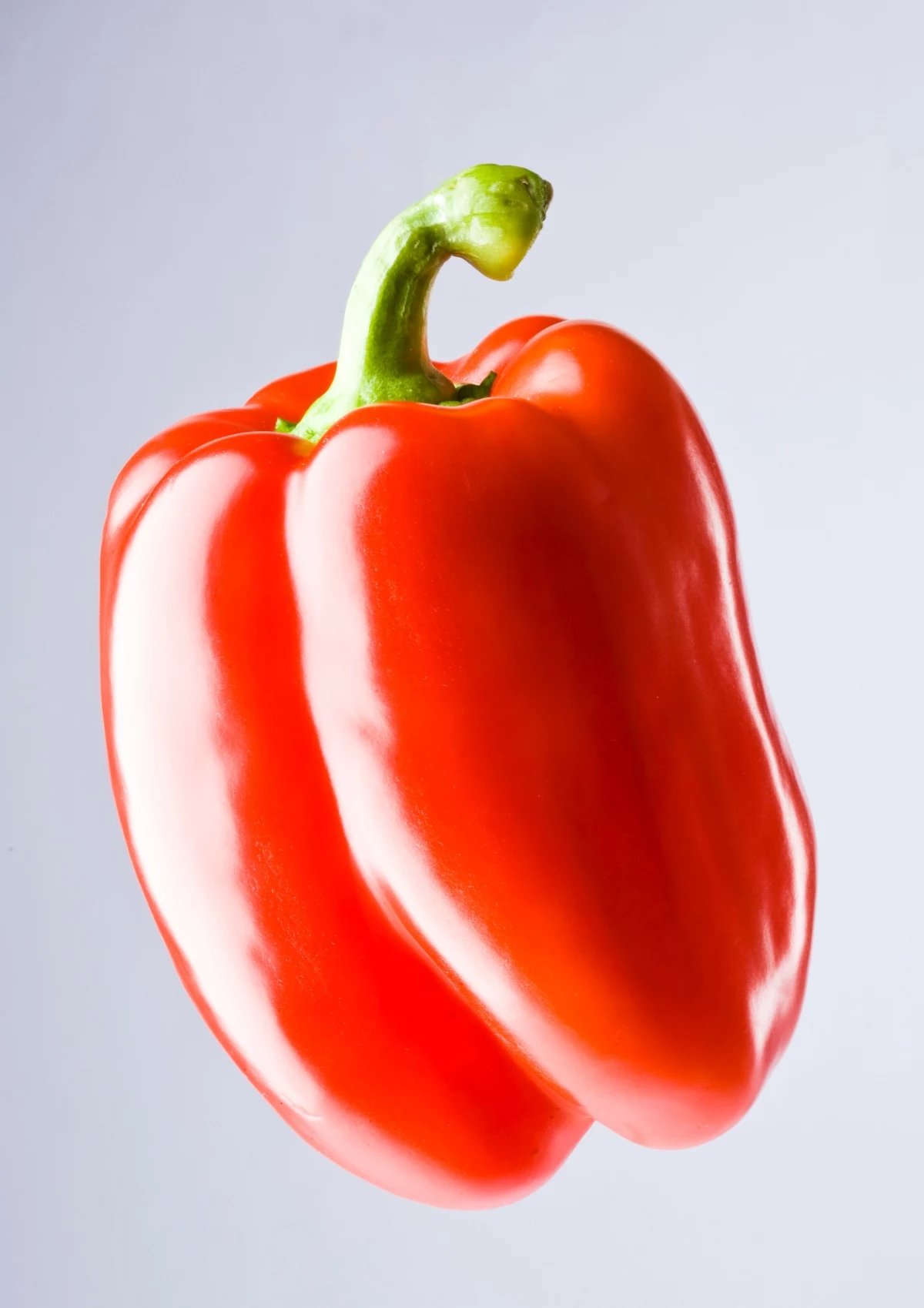
Most plants have what the pros call “apical dominance.” It just means the main, central stem is the boss. It grows tall and fast, thanks to a hormone that suppresses the side branches. When you snip off that top growing tip—a technique called “topping”—you break that dominance. Suddenly, the plant sends a new signal: “Hey, let’s beef up the side shoots!” Instead of one lanky stem, you get a bushier, stronger plant with way more branches. And more branches mean more flowers, which means… yup, more peppers.
The other big win is all about light and air. A dense, leafy plant looks great, but a lot of those inner and lower leaves are shaded out. They end up using more energy than they create, becoming a drain. Even worse, that thick foliage traps moisture and humidity, which is basically a welcome mat for fungal diseases. I learned that the hard way during one particularly damp summer where a row of unpruned bell peppers got hit hard with leaf spot, while the pruned row right next to it, with all its glorious airflow, was mostly fine. Pruning is your first line of defense.
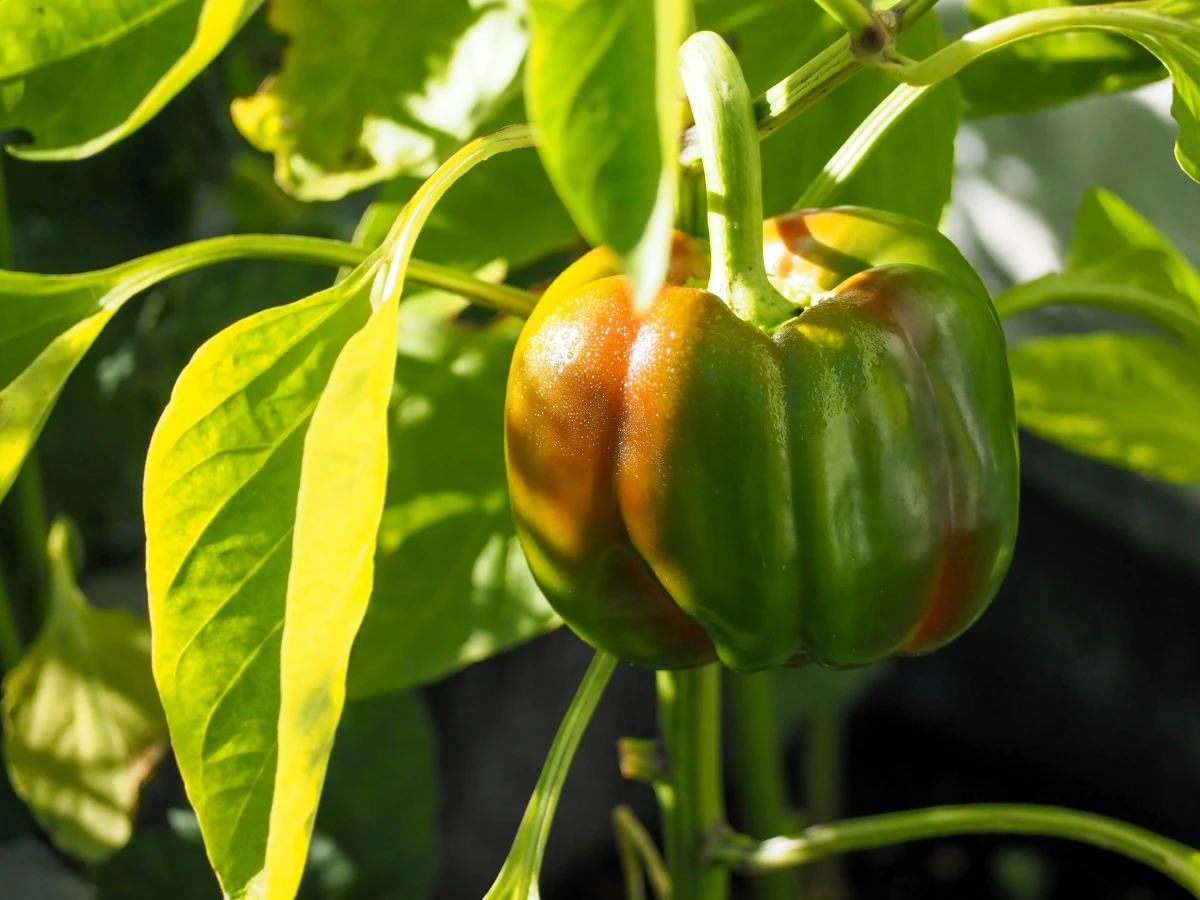
Getting the Right Tools (Without Breaking the Bank)
You don’t need a bunch of fancy equipment. Using the right tool is all about making a clean cut that heals fast, keeping diseases out. Here’s what’s in my own garden toolkit.
Your essential shopping list:
- Bypass Pruners: These are non-negotiable. They work like scissors, with two blades that bypass each other for a clean slice. This is what you want for living stems. Stay away from “anvil” pruners; they have a single blade that crushes the stem against a flat surface, which can damage the plant tissue. A good pair of bypass pruners will run you between $15 and $30, but they’ll last for years if you take care of them.
- Micro-Tip Snips: Think of these as tiny, super-sharp scissors. They’re perfect for delicate work, like snipping off a single leaf or a tiny sucker in a crowded spot. You can usually find a pair for about $10-$15 at any garden center or online.
Heads up! The Step Everyone Skips (But Shouldn’t)
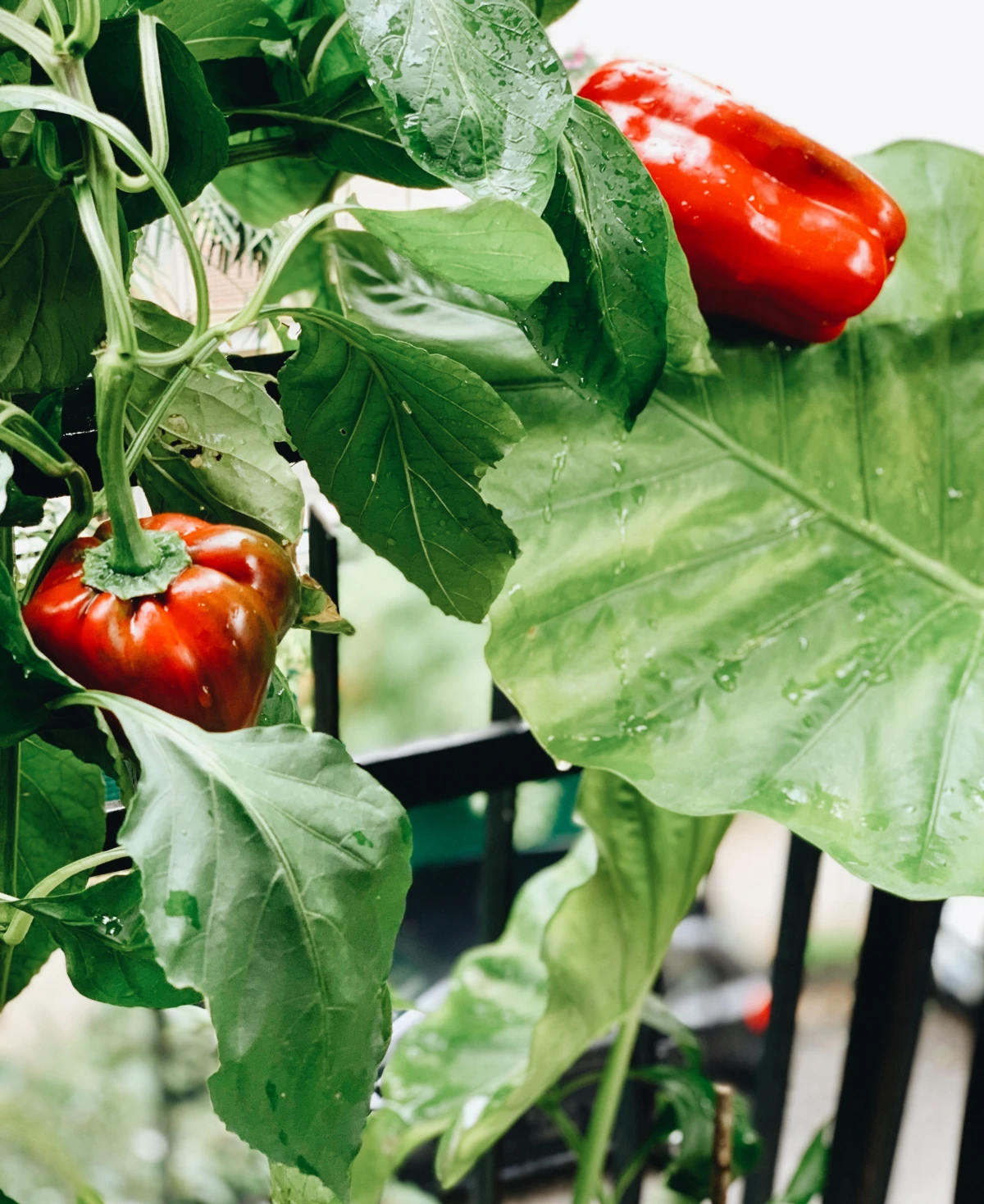
Okay, let’s talk sterilization. I know, it sounds fussy, but plant diseases can spread on your tools without you ever seeing them. Wiping down your blades between plants is one of the most professional things you can do for your garden.
You’ve got two great options here. The first is 70% isopropyl alcohol. It’s my go-to because it’s so fast. I keep a little spray bottle of it right in my tool bucket. A quick spritz and a wipe, and you’re good to go. It’s super convenient, though the cost can add up over a whole season. The other method is a 10% bleach solution (one part bleach to nine parts water). This is incredibly cheap and effective. The downside? Bleach is corrosive, so you absolutely have to rinse and dry your tools thoroughly afterward to prevent rust. I usually use bleach for a deep clean at the end of the day.
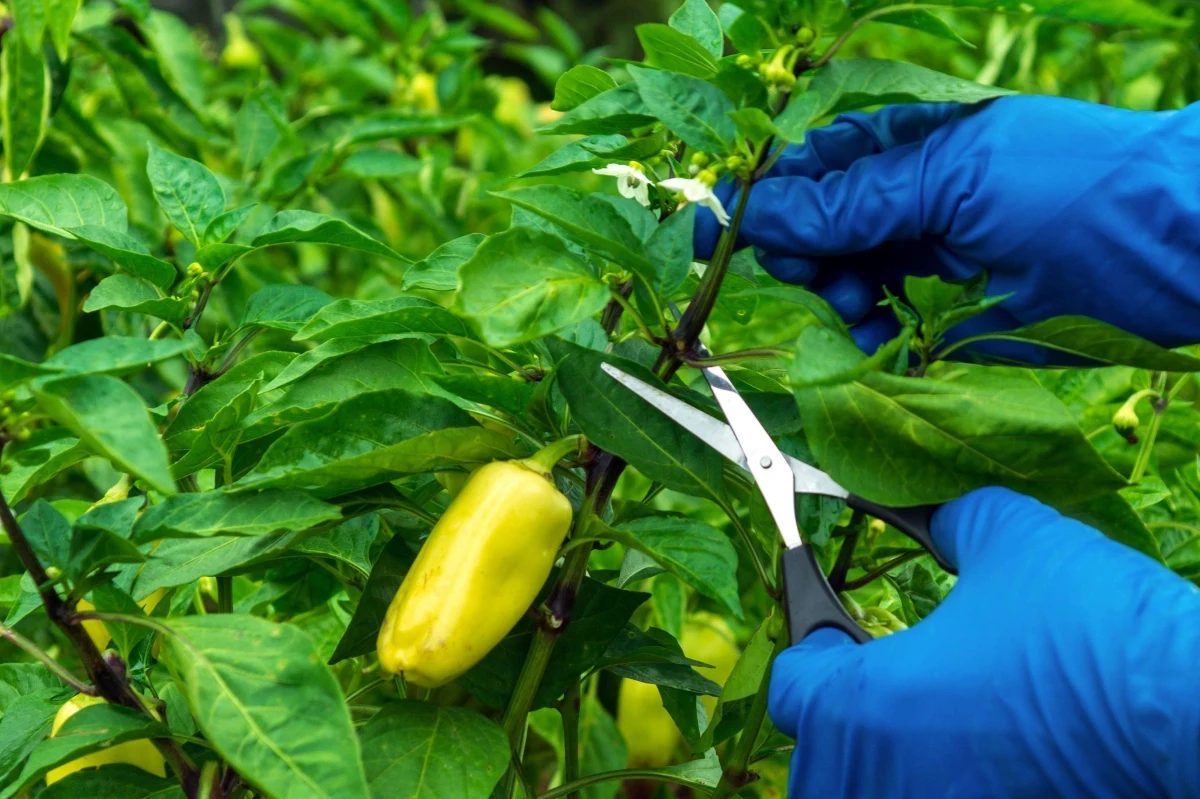
The Three Key Pruning Moves for Peppers
Pepper pruning really boils down to three main jobs you’ll do at different times. Once you get these down, you’re golden.
1. Topping: Building a Strong V-Shape
This is the first big cut and it sets the plant up for success. It feels dramatic, but trust me.
- When to do it: Wait until your plant is about 8-12 inches tall and has a few sets of leaves. You’re looking for the spot where the plant naturally starts to form a little ‘Y’ shape. That’s your sweet spot.
- How to do it: Find that main stem. Go up to the 4th or 5th node (the joint where leaves pop out). Take your clean bypass pruners and make a cut right above that node. Done.
- The result: Before, you had a leggy seedling. In about two or three weeks, you’ll have a bushy, robust plant with two or more strong main stems instead of one. This V-shaped frame is the foundation for a massive yield. By the way, if you bought a bigger plant from the nursery, you might wonder if it’s too late. As long as it’s still actively growing and hasn’t set a ton of fruit, you can usually still top it to encourage bushier growth.
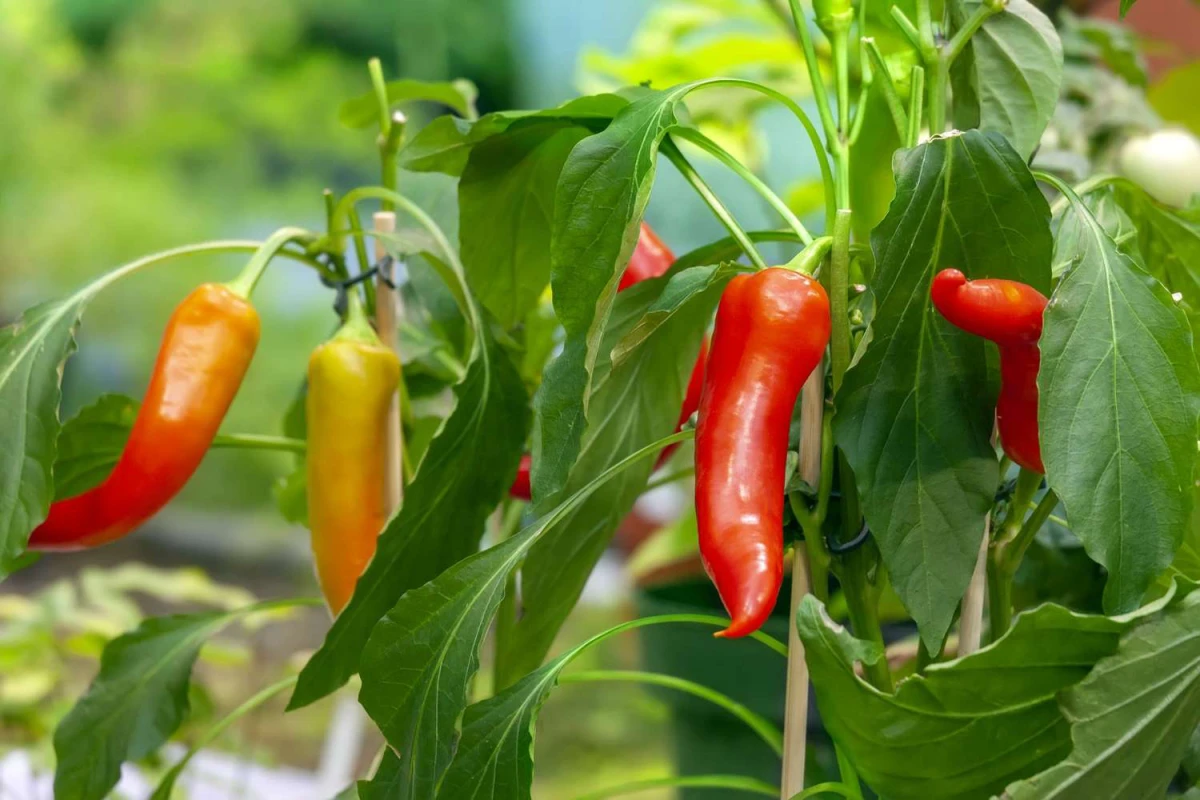
2. Bottom Pruning: The ‘Lollipop’ Cut
This simple trick is a game-changer for preventing disease.
- When to do it: A few weeks after topping, once the plant has a nice little canopy on top.
- How to do it: Snip off all the leaves and tiny side shoots on the bottom 6-8 inches of the main stems. You can often just pinch the little shoots off with your fingers. This creates a shape kind of like a lollipop.
- Why it works: Soil is full of spores that splash up onto low leaves when you water. By clearing that lower area, you create a buffer zone. It also massively improves airflow, keeping the base of the plant dry and happy.
3. Maintenance Pruning: The Weekly Check-In
This is your ongoing guidance throughout the season. It’s super quick and easy.
- When to do it: Every week or so when you’re out watering, just take a quick peek. This whole process shouldn’t take more than 60 seconds per plant.
- What to look for: Pinch off any suckers (tiny new shoots in the ‘V’ where a branch meets the stem), snip any branches growing inward toward the center of the plant, and remove any yellow or damaged leaves immediately. Oh, and toss that diseased material in the trash, not the compost!
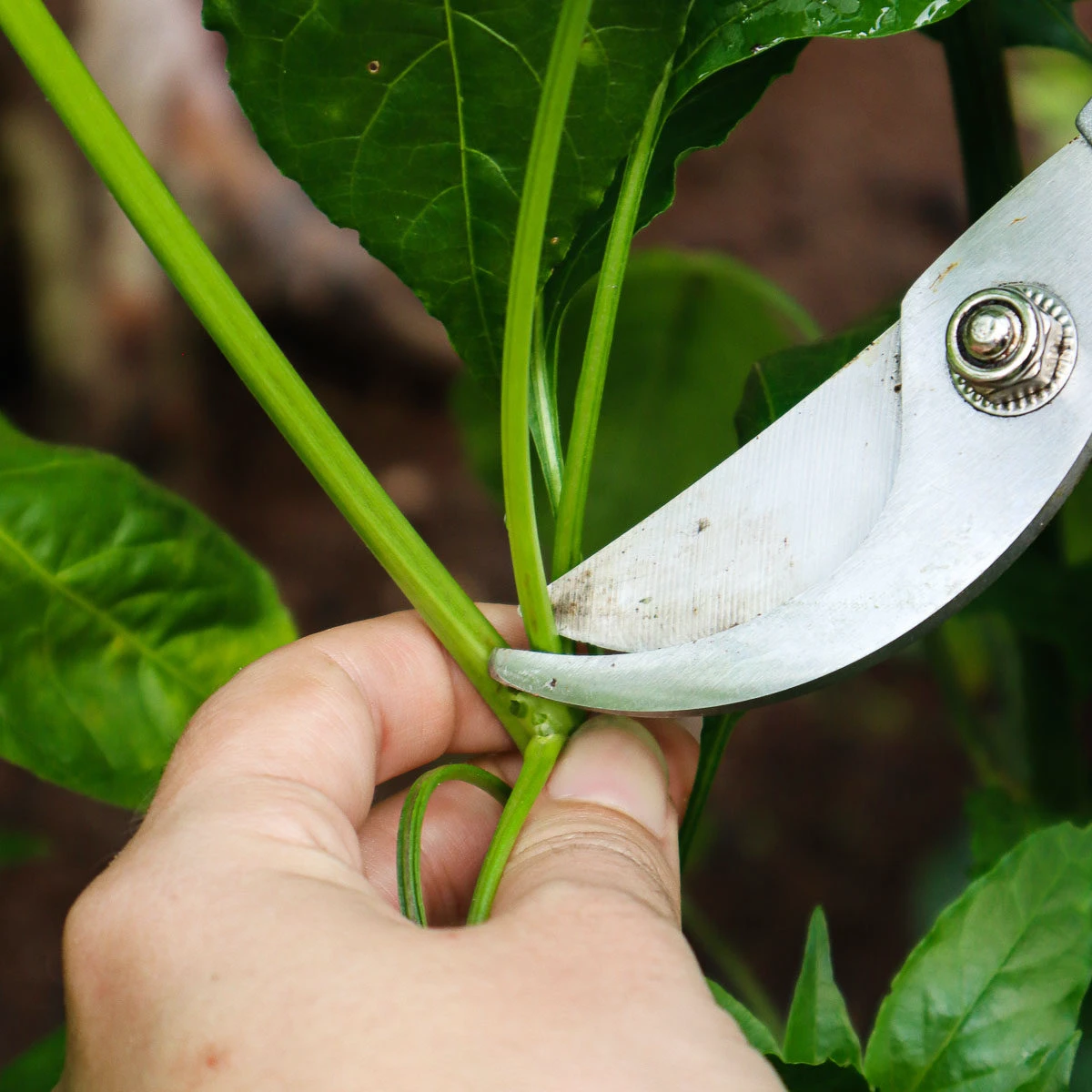
Quick Win: Got two minutes? Go find one inward-facing branch on your biggest pepper plant and snip it off. You just improved that plant’s airflow and light exposure instantly. Feels good, right?
Pruning for Your Climate (This is Super Important!)
A pruning strategy that’s brilliant for a long, hot summer can be a total flop in a place with a shorter growing season. You have to adapt.
For long-season gardeners (think warm climates): Be aggressive! Your plants have plenty of time to recover and will reward you with multiple waves of peppers. Topping is a must, and bottom pruning is essential. You can even cut the plant back by a third mid-season if it seems tired to spark a huge fall harvest.
For short-season gardeners (cooler climates): Time is not on your side. Your goal is to get fruit ripe before that first frost. Topping can be risky here; it forces the plant to spend a few precious weeks rebuilding instead of fruiting. I’d focus entirely on bottom pruning for disease prevention and thinning out just a few leaves to let sunlight hit the peppers and help them ripen faster. And that common advice to pinch off the first flower? Don’t do it! In a short season, that first flower might be your first and best ripe pepper.
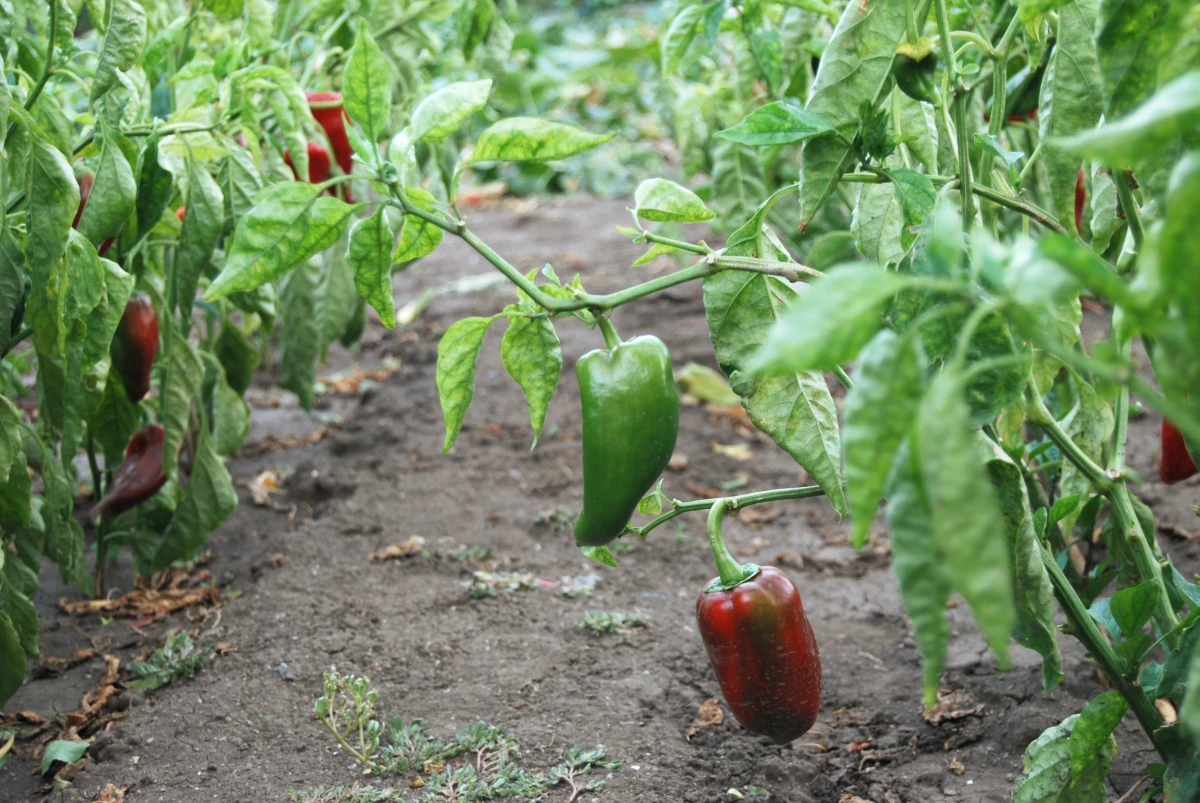
A Few Pro Tips and Common Questions
Once you’re comfortable, you can get a little more advanced.
One of my favorite things to do is overwinter a special pepper plant. Many peppers are actually perennials and can live for years. I once kept a particularly amazing hot pepper variety going for several seasons because its smoky, citrusy flavor was impossible to find anywhere else. Before the first frost, I’d bring it inside, prune it back hard, and let it go dormant in a cool, dim garage. In the spring, it would burst back to life.
And remember, different peppers have different growth habits. Bell peppers need that strong, topped frame to hold up their heavy fruit. Vining types like some Aji peppers need pruning and staking to keep them from becoming a tangled mess. Naturally bushy plants like many Thai peppers just need a good thinning to keep air moving.
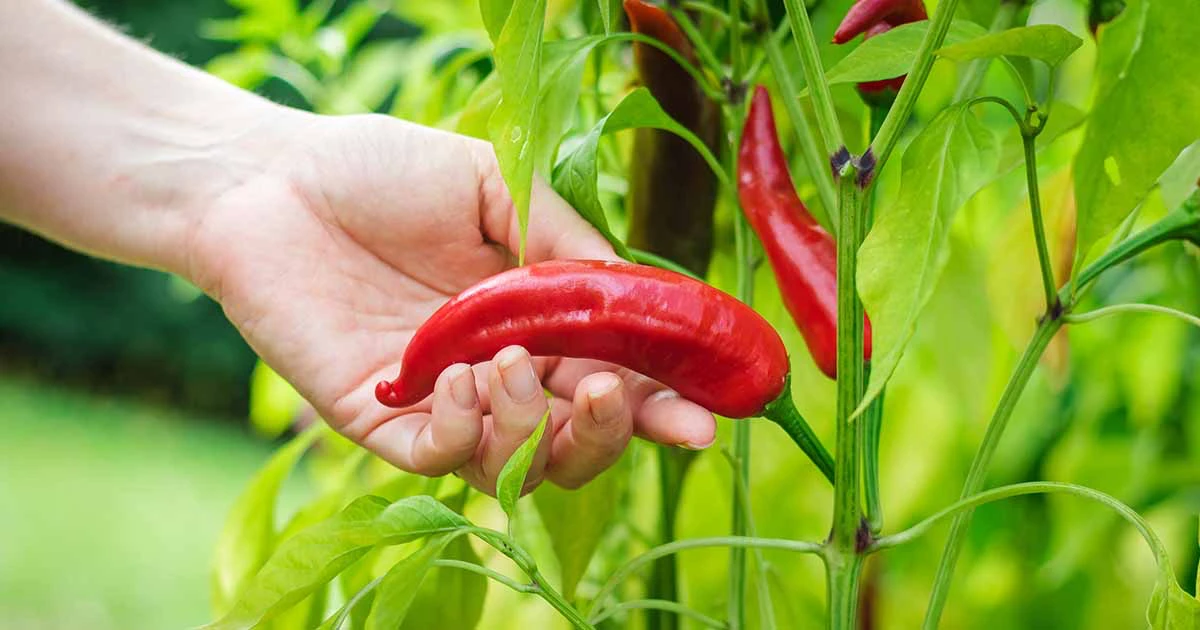
A quick troubleshooting guide:
- What if I cut too much? Don’t panic. As long as you didn’t remove more than about a third of the plant, it will recover. Just give it some time and gentle care.
- Why do the leaves look droopy after I pruned? It’s a little bit of shock, which is totally normal. The plant is just adjusting. As long as the soil is moist (not soaking), it should perk back up within a day or two.
- NEVER prune a stressed plant. If your plant is already struggling with drought or pests, pruning is the last thing it needs. Fix the main problem first, then prune once it’s recovered.
- Always wear gloves! This is a big one, especially with hot peppers. The oils (capsaicin) can get on your hands and cause serious pain if you touch your face or eyes.
In the End, It’s Your Call
These are the techniques that the pros use, but the most important skill you can learn is just watching your plants. They’ll tell you what they need.
My best advice? If you have two of the same pepper plant, try these methods on one and leave the other one alone. See for yourself what happens. There’s no better teacher than your own garden. A little bit of thoughtful pruning is your ticket to a basket overflowing with peppers.










